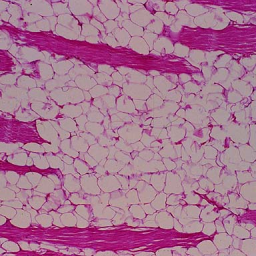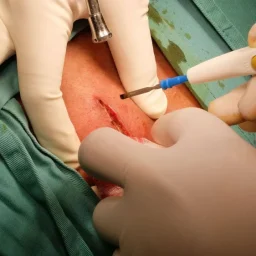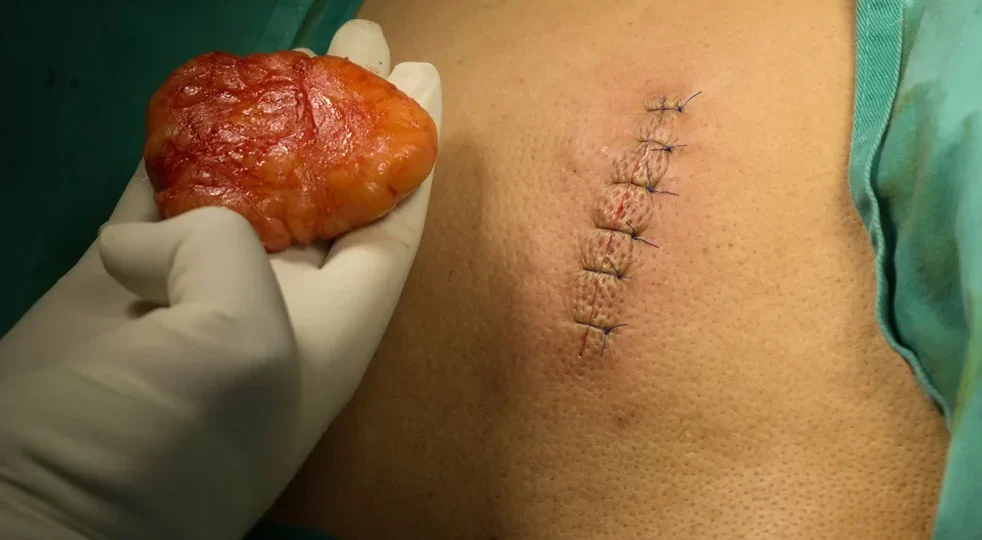
1. Understanding Lipomas
A lipoma is a soft, movable lump that forms under the skin. They are typically slow-growing and are made up of fatty tissue. Lipomas are usually round or oval and can vary in size, with most being about 2 to 5 centimeters in diameter. Although lipomas are non-cancerous, they can be bothersome, particularly when they grow in locations where they cause physical discomfort or interfere with daily activities.
Types of Lipomas
There are different types of lipomas, which are categorized based on their location or appearance:
- Superficial Lipomas: These are the most common type and form just beneath the skin. They are usually soft, painless, and slow-growing.
- Deep Lipomas: These lipomas are located deeper within the tissues, often in muscles, and can be harder to detect. Deep lipomas are rarer and can sometimes cause discomfort due to their position near nerves or muscles.
- Fibrolipomas: These lipomas are made up of both fat and fibrous tissue, making them firmer than typical lipomas.
- Myelolipomas: These are rare lipomas found in the adrenal glands and are made up of both fat and bone marrow tissue.
2. Causes of Lipomas
The exact cause of lipomas is not fully understood, but they are generally considered to be the result of an overgrowth of fat cells. Several factors may contribute to the development of lipomas:
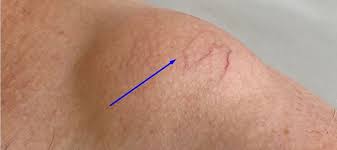
Genetics
Family history plays a significant role in the development of lipomas. People who have close relatives with lipomas are more likely to develop them themselves. In some cases, lipomas are inherited as part of a genetic condition known as familial multiple lipomatosis, which leads to the growth of multiple lipomas throughout the body.
Trauma or Injury
Some researchers believe that trauma or injury to a specific area may trigger the development of a lipoma, although this theory is not universally accepted. The idea is that trauma may cause fat cells to multiply abnormally in response to the injury.
Age and Gender
Lipomas are more common in middle-aged adults, typically between the ages of 40 and 60. Men are slightly more likely to develop lipomas than women. While lipomas can occur at any age, they are rare in children.
Other Conditions
Certain genetic conditions can predispose individuals to developing lipomas. For example, Gardner’s syndrome and Cowden syndrome are both associated with the development of multiple lipomas, often accompanied by other health issues, including gastrointestinal polyps and other benign tumors.
3. Symptoms of Lipomas
Most lipomas do not cause significant symptoms, which is why they are often not detected until a routine check-up or when they become large enough to be noticeable. Common symptoms include:
- A Soft Lump: The most obvious symptom is the presence of a soft, round, or oval lump just under the skin. Lipomas are typically small, but they can grow over time, sometimes reaching sizes of up to 10 centimeters or more.
- Painless Growth: In the majority of cases, lipomas are not painful. However, if the lipoma presses against nerves or other tissues, it can cause discomfort or tenderness.
- Movable Lump: Lipomas are typically movable beneath the skin. Unlike tumors that are fixed in place, a lipoma can be easily shifted when gently pressed.
- Slow Growth: Lipomas grow slowly over time. While they are often small at first, they can gradually increase in size, which may make them more noticeable.
4. Diagnosing Lipomas
If you discover a lump or growth on your body, it is important to consult a healthcare provider for an accurate diagnosis. While lipomas are typically easy to identify through physical examination, other diagnostic tests may be required to confirm the diagnosis or rule out other conditions. These tests include:
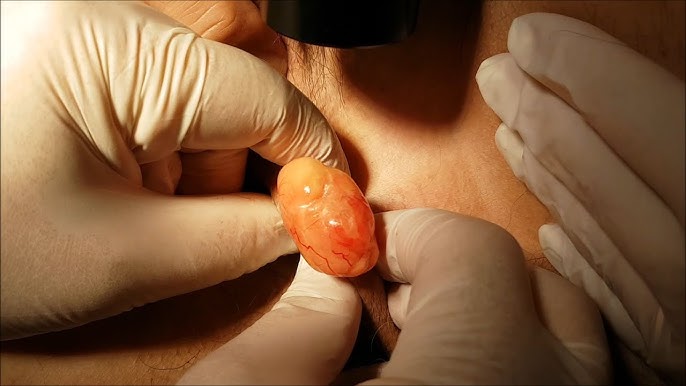
- Physical Examination: A doctor will usually begin by feeling the lump. Lipomas are typically soft, movable, and non-tender, making them relatively easy to identify.
- Ultrasound: An ultrasound may be used to determine the depth, size, and consistency of the lump. This imaging technique can help confirm that the lump is composed of fatty tissue and not another type of tumor.
- MRI or CT Scan: If the lipoma is deep or if there is any concern about its nature, an MRI or CT scan may be recommended. These imaging methods provide detailed images of the soft tissue and can help in identifying larger or deeper lipomas.
- Biopsy: In rare cases, a biopsy may be needed to remove a small sample of the tissue for examination under a microscope. This is typically done when there is a concern that the lump may be malignant or atypical.
5. Treatment Options for Lipomas
Most lipomas do not require treatment, especially if they are small and not causing any symptoms. However, if a lipoma becomes large, painful, or interferes with daily activities, treatment options are available. These include:
1. Surgical Removal
The most common and effective method for treating a lipoma is surgical removal. This procedure is typically performed under local anesthesia, meaning the area surrounding the lipoma is numbed. The surgeon will make a small incision and remove the lipoma, along with the surrounding fatty tissue. In most cases, the procedure is relatively simple and the recovery time is short. However, the lipoma may return if the entire capsule of fat is not removed.
2. Liposuction
For smaller lipomas, liposuction can be an alternative treatment. This method involves using a suction device to remove the fatty tissue without making a large incision. While this technique may be less invasive, it is not always effective in completely removing the lipoma, and the lump can sometimes recur.
3. Steroid Injections
In some cases, steroid injections may be used to shrink a lipoma. These injections can reduce the size of the lump, but they do not remove it completely. Steroid injections may be an option for patients who do not want to undergo surgery or who have multiple small lipomas.
4. Non-Surgical Options
For patients who are not candidates for surgery or those with multiple lipomas, other non-surgical treatments may be considered. These include cryotherapy (freezing the lipoma), laser treatment, and enzyme injections, although these methods are not as widely used or as effective as surgery.
6. Potential Complications of Lipomas
Lipomas are generally considered harmless, but there are a few potential complications to be aware of:
- Recurrence: Lipomas can sometimes return after being removed. This is more likely if the entire fatty capsule is not excised.
- Compression of Nerves or Muscles: If a lipoma is located in a deep tissue layer, it can press against nerves or muscles, causing discomfort, pain, or functional problems.
- Atypical Lipomas: In rare cases, a lipoma can develop into an atypical lipoma, which has a slightly higher risk of becoming malignant. These types of lipomas should be monitored more closely.
- Cosmetic Concerns: While lipomas are typically benign, some individuals may be concerned about the appearance of the lump, particularly if it is in a visible area of the body.
7. Preventing Lipomas
There is no known way to prevent lipomas from developing. However, maintaining a healthy lifestyle, managing weight, and avoiding trauma to the skin may help reduce the risk. Additionally, if there is a family history of lipomas or a genetic condition linked to their development, regular check-ups with a healthcare provider may be recommended to monitor the condition.
Lipomas are typically benign growths composed of fatty tissue. They are common and generally harmless, but their presence can cause concern due to their size or location. While most lipomas do not require treatment, they can be surgically removed if necessary. Understanding the causes, symptoms, and treatment options for lipomas can help patients make informed decisions about their healthcare. If you notice a lump or growth on your skin, it is always advisable to seek a professional diagnosis to ensure that it is a benign lipoma and not a more serious condition.


